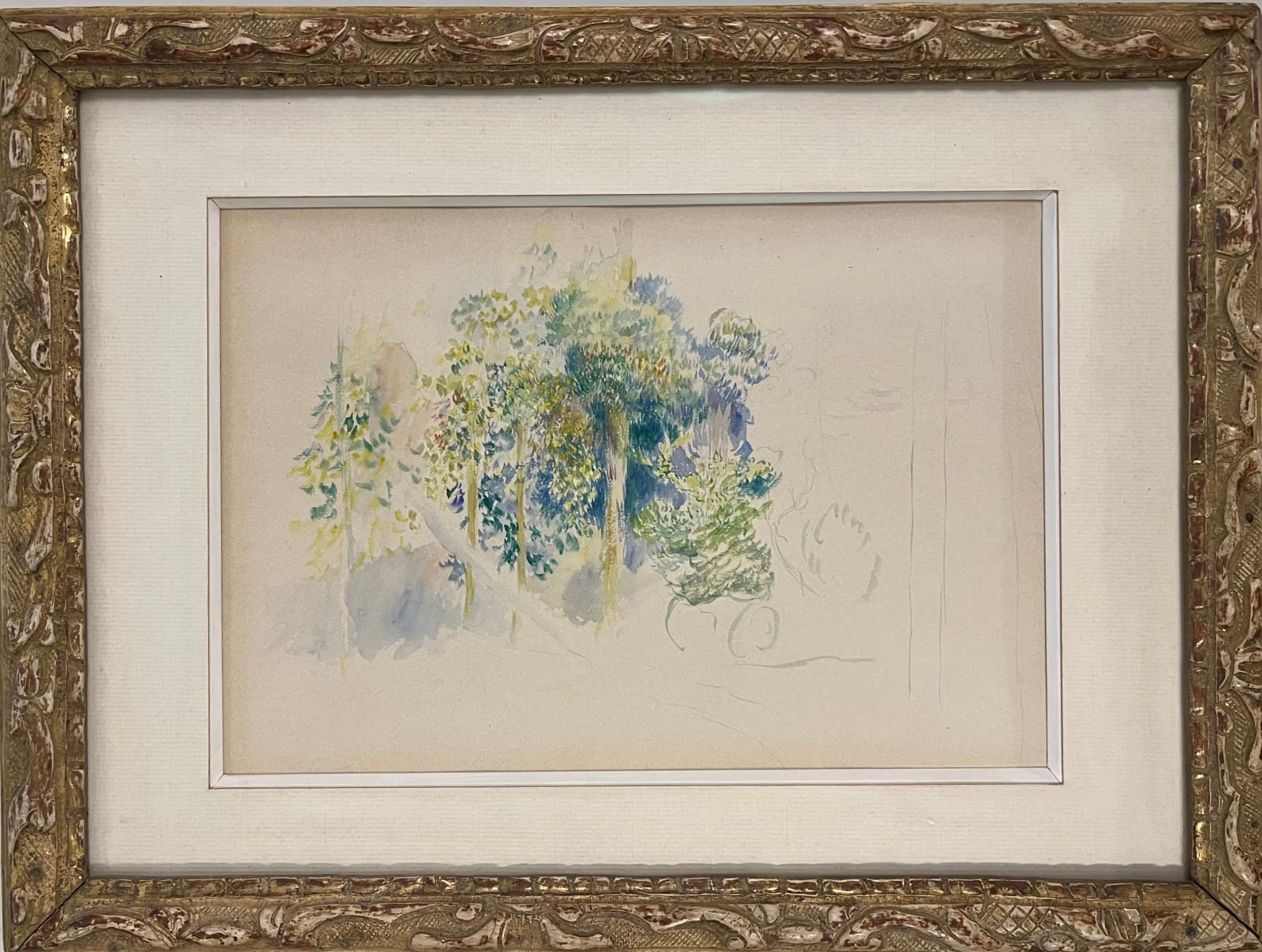-
Artworks
Pierre-Auguste Renoir
Le Chemin, c.1889-95Watercolour on paper7 5/8 x 11 in, 19.5 x 28 cm“A painter can’t be great if he doesn’t understand landscape. At one point the term ‘landscapist’ was one of scorn, especially in the eighteenth century. And yet, that century which...“A painter can’t be great if he doesn’t understand landscape. At one point the term ‘landscapist’ was one of scorn, especially in the eighteenth century. And yet, that century which I adore produced great landscape artists. I am of the eighteenth century.”
- Pierre-Auguste Renoir
Influenced by his friend Paul Cézanne, Renoir began to experiment more with watercolour. The swiftness of the medium allowed Renoir a different artistic freedom in capturing nature’s fleeting moments. In Le Chemin Renoir contrasts washes of tone with delicate small strokes, to beautifully capture the movement of the trees. The drawing has a loose, spontaneous quality which captures the essence of the landscape.
Renoir created a number of landscapes in the style of Le Chemin between 1885 and 1900, depicting scenes of the French countryside, fields, rivers and, as in the present work, forests. Renoir’s watercolours can now be found in many museum collections such as Musée d'Orsay, Paris; Metropolitan Museum of Art, New York and The National Gallery, London.Provenance
The Artist
Pierre Renoir (by descent from above)
Claude Renoir (by descent from above)
Cornette de Saint Cyr, Estate of Claude Renoir, 1 June 1995, lot 14
Private Collection (acquired from above)Exhibitions
Paris, Galerie Durand-Ruel, Dessins et Pastels, Paris 1922, no.23 (inventory no.12416)



